This site uses affiliate links, meaning that if you make a purchase through our links, we may earn an affiliate commission.
Welcome to the untamed beauty of the Amazon Rainforest in Peru!
Prepare yourself for an unforgettable 3-day adventure in the Amazon, Peru, where you will immerse yourself in the mesmerizing wonders of one of the world’s most biodiverse regions. Brace yourself to discover the secrets of the untamed rainforest as you embark on an exhilarating journey that will leave you in awe of nature’s power and grandeur.
During this epic adventure, you will navigate deep into the heart of the Amazon, surrounded by lush greenery, vibrant wildlife, and the symphony of nature’s harmonies. Your senses will come alive as you traverse dense jungles, explore winding rivers, and witness the raw beauty of untouched landscapes.
Join us as we uncover hidden gems, encounter fascinating wildlife, and delve into the cultural tapestry of the indigenous communities residing in these remote lands. Engage in thrilling activities such as guided hikes, wildlife spotting, canoe excursions, and immersive cultural experiences, all designed to give you an authentic taste of life in the Amazon, Peru.
Whether you’re an adventure enthusiast, nature lover, or simply seeking a break from the ordinary, this 3-day journey in the Amazon, Peru promises to be an experience of a lifetime. So, pack your sense of wonder and get ready to discover the untamed rainforest like never before. Let the adventure begin!
- 1. The Amazon is Peru: What to Know About the Peruvian Amazon Rainforest
- 2. The Northern, Central, and Southern Divisions of the Amazon, Peru
- 3. The Best Region Amazon Region to Visit: Discover the Jewel of the Peruvian Amazon
- 4. Time Your Exploration of the Peruvian Amazon Right
- 5. Choose the Right Tour Company for Your Amazon Adventure
- 6. Preparing for Your Amazon Exploration in Peru
- 7. Safety Precautions in Amazonian Rainforest, Peru
- 8. Packing for Your Amazon, Peru Exploration
- 9. Journey to the Heart of Tambopata Amazon Jungle: Refugio Amazonas Lodge
- 10. 3-Day Adventure in the Amazon, Peru
- 11. Intrepid Scout's Tips for 3-Day Adventure in Amazon, Peru
The Amazon is Peru: What to Know About the Peruvian Amazon Rainforest
The Amazon Rainforest in Peru, often referred to as the Peruvian Amazon, is a mesmerizing natural wonder that stretches across the vast expanse of Peru’s Amazon Basin. Covering approximately 60% of the country’s territory, it is a land of incredible biodiversity, stunning landscapes, and profound cultural significance.
Spanning over 782,000 square kilometers (302,000 square miles), the Peruvian Amazon is part of the larger Amazon Rainforest, often referred to as the “Lungs of the Earth” due to its crucial role in regulating the planet’s climate and oxygen production. This expansive tropical rainforest is home to an astonishing array of plant and animal species, many of which are found nowhere else on Earth.
The Peruvian Amazon’s unique characteristics include dense vegetation that thrives in its warm and humid climate, majestic rivers that wind their way through the dense jungle, and countless hidden oxbow lakes and flooded forests. Towering trees, lush canopies, and vibrant orchids create a captivating landscape that seems untouched by time.
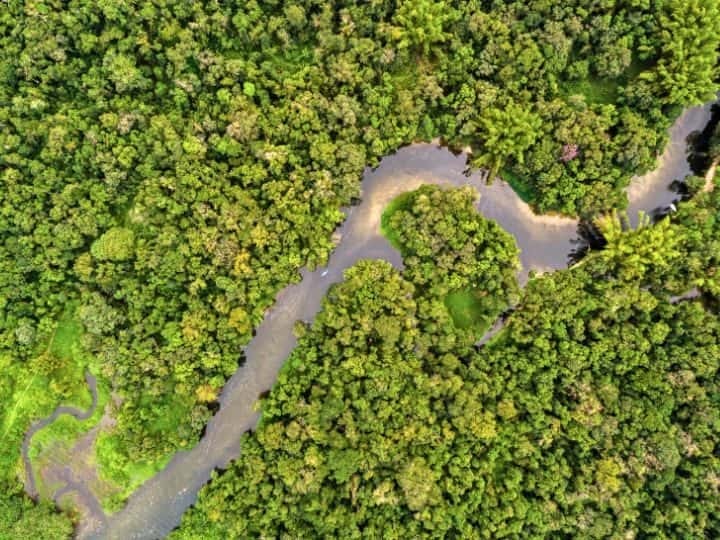
3-Day Adventure in the Amazon, Peru
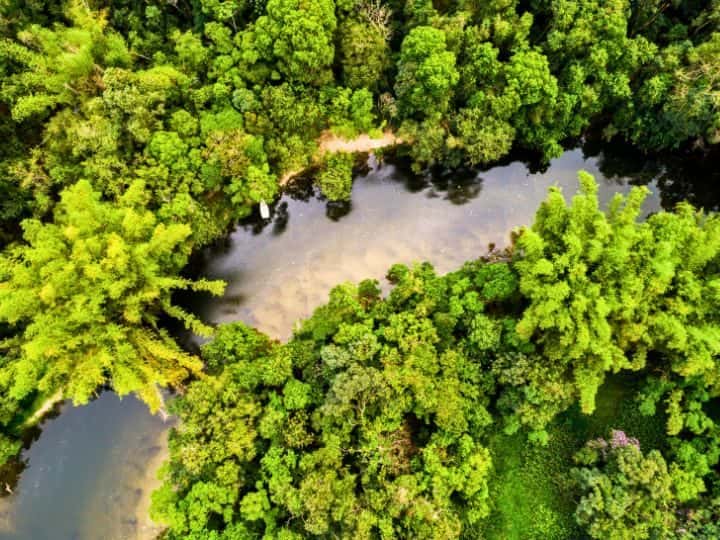
3-Day Adventure in the Amazon, Peru
The region’s biodiversity is awe-inspiring, boasting an estimated 16,000 species of plants, 2,000 species of birds, 700 species of fish, and countless other mammals, reptiles, and insects. From the majestic jaguar and elusive giant river otter to colorful macaws and mischievous monkeys, the Peruvian Amazon is a paradise for wildlife enthusiasts and nature lovers alike.
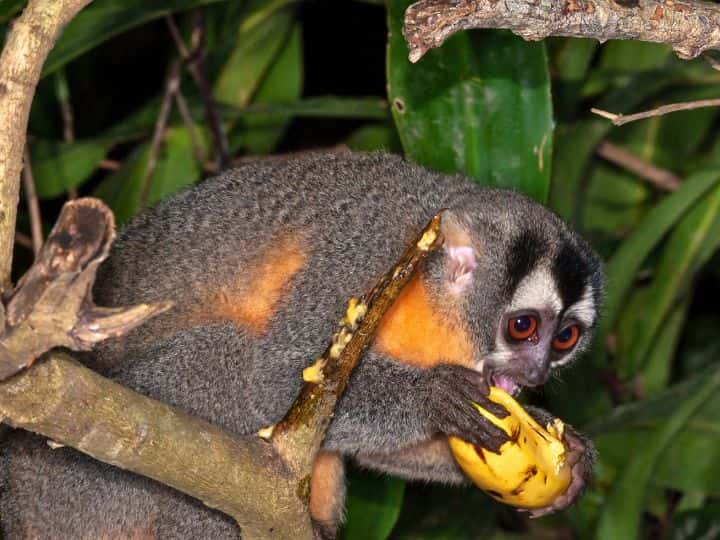
Azara’s Night Monkey at Tambopata / 3-Day Adventure in the Amazon, Peru
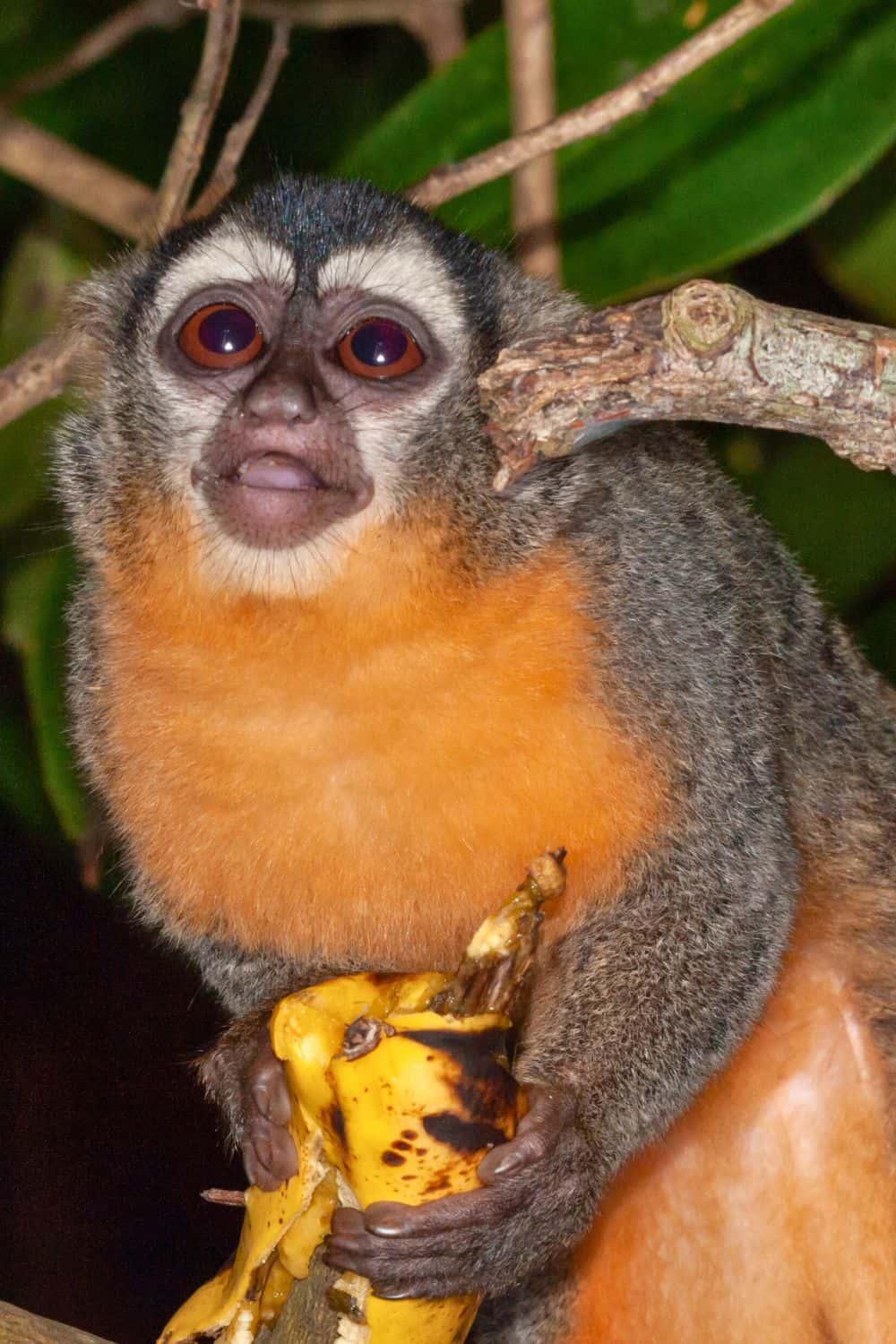
Azara’s Night Monkey at Tambopata / 3-Day Adventure in the Amazon, Peru
In addition to its ecological importance, the Peruvian Amazon is also culturally significant. It is home to numerous indigenous communities that have inhabited the rainforest for centuries, preserving their traditions, knowledge of medicinal plants, and harmonious way of life with nature.
Conservation efforts and sustainable tourism play a crucial role in preserving the Peruvian Amazon. Organizations and initiatives work tirelessly to protect the rainforest’s delicate ecosystems, combat deforestation, and promote responsible practices among visitors.
Immersing oneself in the Amazon, Peru, is an invitation to explore one of the Earth’s most captivating realms.
The Northern, Central, and Southern Divisions of the Amazon, Peru
The Peruvian Amazon Rainforest, also known as Peruvian Amazonia, encompasses a vast area within the borders of Peru. It stretches from the eastern slopes of the Andes Mountains to the neighboring countries of Ecuador, Colombia, Brazil, and Bolivia.
This expansive region covers over half of Peru’s land and is divided into three main sections: the Northern, Central, and Southern Amazon.
- Northern Amazon
The Northern Amazon region of Peru is known for its vast flooded forests and intricate waterways. It includes notable areas such as the Pacaya-Samiria National Reserve, where extensive swamps and wetlands create a unique ecosystem.
This region is home to an array of wildlife, including pink river dolphins, manatees, caimans, and various bird species.
Indigenous communities, such as the Cocama-Cocamilla and Yagua, inhabit this area and maintain their traditional ways of life.
- Central Amazon
The Central Amazon region encompasses dense rainforest and is recognized for its exceptional biodiversity. It features prominent protected areas like Manu National Park, Manu Reserved Zone, and Manu Cultural Zone which provide a sanctuary for countless species
This region is renowned for its birdwatching opportunities, with a wide range of colorful and rare bird species. It is also home to various primates, including howler monkeys, spider monkeys, and capuchin monkeys.
Indigenous groups, such as the Ese’Eja and Matsiguenka, have inhabited this area for generations and continue to preserve their cultural heritage.
- Southern Amazon
The Southern Amazon region combines rainforest with transitional ecosystems as it approaches the foothills of the Andes Mountains. It includes remarkable areas like the Tambopata National Reserve, which is situated in the Madre de Dios Department.
This region showcases a diverse array of flora and fauna, including jaguars, giant anteaters, tapirs, and a wide variety of bird species with over 600 species of birds recorded
It is also characterized by cloud forests that merge seamlessly with the dense jungle.
Indigenous communities, such as the Harakmbut and Shipibo-Conibo, have a strong presence in this region, enriching it with their cultural traditions and knowledge of the land.
Each division of the Peruvian Amazon Rainforest presents distinct ecosystems, wildlife, and cultural elements.
The Best Region Amazon Region to Visit: Discover the Jewel of the Peruvian Amazon
When it comes to exploring the wonders of the Peruvian Amazon, choosing the best region to visit can be an exhilarating decision.
I was torn between either Northern Amazon or Southern Amazon:
- The Northern Amazon or Iquitos Amazon Jungle Region has one entry point and it is the city of Iquitos.
Iquitos can only be accessed by plane or by boat.
The flight from Lima is about 1 hour and 45 minutes. However, if you are flying from Cusco to Iquitos, then the flight is over 5 hours long and there is usually a stopover in Lima, and, of course, it is more expensive.
If you go for a boat ride is about 10-12 hours and it originates either in Brazil or Columbia.
One of the benefits of choosing the Iquitos Amazon Jungle Region is that this is the only region of Peru where it is possible to visit the true “Amazon River”. What it means is that you are going to be on the Amazon River as opposed to a tributary of the Amazon River.
In addition, the Amazon River has wildlife that is not found in any other tributaries. So, if you want to spot the very rare pink river dolphins, then this is the place to go.
- The Southern Amazon or Tambopata Amazon Jungle Region has only one key access point in the Southern Amazon and it is the city of Puerto Maldonado.
The best way to reach Puerto Maldonado is by plane. The flight from Cusco to Puerto Maldonado is about 1 hour. If you are flying from Lima to Puerto Maldonado, then your flight will be about 1 hour and 30 minutes.
After doing all the research, I decided on going to the Southern Amazon.
- First of all, the flight from Cusco was only about 1 hour long. And, it was very inexpensive.
- Second, numerous daily excursions were possible in this area. But, what made me decide on Tambopata Amazon Jungle Region was the fact that it has the highest concentration of avian clay licks in the world.
- Finally, I was impressed by some of the lodges in that area. Not only offering nice accommodations but also being so close to the wildlife viewing opportunities and having guided tours.
Time Your Exploration of the Peruvian Amazon Right
The Peruvian Amazon Rainforest welcomes adventurers year-round, but understanding the distinct seasons and weather patterns can enhance your experience.
Whether you prefer the lush greenery of the rainy season or the drier conditions of the dry season, each period offers unique advantages to consider.
- Dry Season (May to October)
The dry season in the Peruvian Amazon typically spans from May to October. During this time, rainfall is minimal, and temperatures are slightly cooler, ranging from 25 to 35 degrees Celsius (77 to 95 degrees Fahrenheit).
The dry season offers several advantages for visitors, including easier navigation along the rivers and trails, as water levels recede. This allows for more accessible wildlife sightings, as animals gather near the water sources. The drier trails also facilitate hiking and exploration of the rainforest.
Additionally, reduced mosquito activity is a welcomed benefit for many travelers. However, it’s important to note that despite the dry season, the Amazon rainforest is still a humid environment, so lightweight and breathable clothing is recommended.
- Rainy Season (November to April)
The rainy season in the Peruvian Amazon typically spans from November to April, characterized by more frequent rainfall and higher humidity levels.
This season breathes life into the rainforest, transforming it into a lush and vibrant oasis. The heavy rains help nourish the flora, resulting in an explosion of greenery and blooming flowers.
The rainy season offers unique opportunities to witness the Amazon’s captivating ecosystem in full force. It is a time when many migratory birds arrive, offering exceptional birdwatching experiences.
The rainforest teems with life, and you can witness the fascinating mating rituals, breeding behaviors, and the emergence of amphibians and insects. Despite the increased rainfall, wildlife sightings are still abundant, and the rainforest takes on an ethereal beauty. It’s important to pack lightweight rain gear and quick-drying clothes during this season, as showers can be frequent and intense.
- Specific Activities and Wildlife Sightings
While wildlife can be observed throughout the year, certain activities and wildlife sightings may be more prevalent during specific times.
For instance, during the dry season, river-based activities such as canoeing and fishing are more accessible due to lower water levels. In contrast, the rainy season brings the opportunity to explore flooded areas, such as oxbow lakes, by boat. This allows for unique experiences like spotting giant river otters and witnessing vibrant aquatic ecosystems.
Additionally, birdwatching enthusiasts may prefer the rainy season as many migratory bird species visit the region during this time. On the other hand, the dry season offers better chances to encounter land-dwelling creatures, such as jaguars, monkeys, and tapirs, as they congregate around diminishing water sources.
Whether you choose the dry season for ease of exploration or the rainy season for the captivating lushness, both periods offer unforgettable encounters with nature’s wonders in this extraordinary ecosystem!
Choose the Right Tour Company for Your Amazon Adventure
When planning your adventure in the Amazon Peru Rainforest, selecting a reputable and responsible tour company is essential to ensure a safe and fulfilling experience.
Here are some tips and considerations to help you make an informed choice:
- Experience and Expertise
Look for tour companies with extensive experience in organizing Amazon rainforest expeditions. Companies with a long-standing presence often have a deep understanding of the region, local ecosystems, and wildlife. Their knowledgeable guides can offer valuable insights, enhancing your understanding and appreciation of the rainforest.
- Certifications and Credentials
Verify if the tour company holds relevant certifications and credentials. Look for affiliations with reputable organizations such as the International Ecotourism Society (TIES) or Rainforest Alliance. These certifications indicate the company’s commitment to sustainable practices and responsible tourism.
- Sustainability Practices
Ensure that the tour company follows sustainable practices to minimize their impact on the environment and support local communities. This can include initiatives like waste management, supporting local conservation projects, and employing local guides and staff.
- Customer Reviews and Recommendations
Read customer reviews and testimonials to gauge the experiences of previous travelers. Positive reviews highlight the company’s professionalism, quality of service, and commitment to customer satisfaction. Look for feedback specifically related to environmental awareness and responsible practices.
- Itinerary and Activities
Evaluate the tour itineraries and activities offered by different companies. Consider your interests and preferences, whether you’re interested in wildlife spotting, cultural interactions, or specific activities like kayaking or jungle hikes. Ensure the company’s itinerary aligns with your desired experience and allows for ample exploration and learning opportunities.
- Recommended Tour Companies
While there are many reputable tour companies operating in the Peruvian Amazon Rainforest, here are a few renowned options known for their expertise:
Rainforest Expeditions: With a strong commitment to sustainability and community involvement, Rainforest Expeditions offers immersive experiences in Tambopata National Reserve, focusing on wildlife observation and environmental education.
Amazon Nature Tours: This company specializes in small-group tours, providing personalized experiences in the Pacaya-Samiria National Reserve. They prioritize sustainable tourism and work closely with local communities to offer authentic cultural encounters.
Explorama Lodges: Operating since 1964, Explorama Lodges offers a range of accommodations and guided experiences in the Amazon rainforest. Their lodges are located near Iquitos, providing access to the diverse ecosystems of the region.
To clarify: am not promoting any of these companies and I am not getting paid by any of them. I spent hours researching and reading the reviews.
The bottom line: I decided to explore the Tambopata Amazon Jungle Region and I went with Rainforest Expeditions. They are excellent and I am recommending them 100%.
Rainforest Expeditions offers three Amazon lodges: Posada Amazonas, Refugio Amazonas, and Tambopata Research Center. I decided on Refugio Amazonas. I recommend that you check them out and see if you like them and which lodge location and activities might be the best for you,
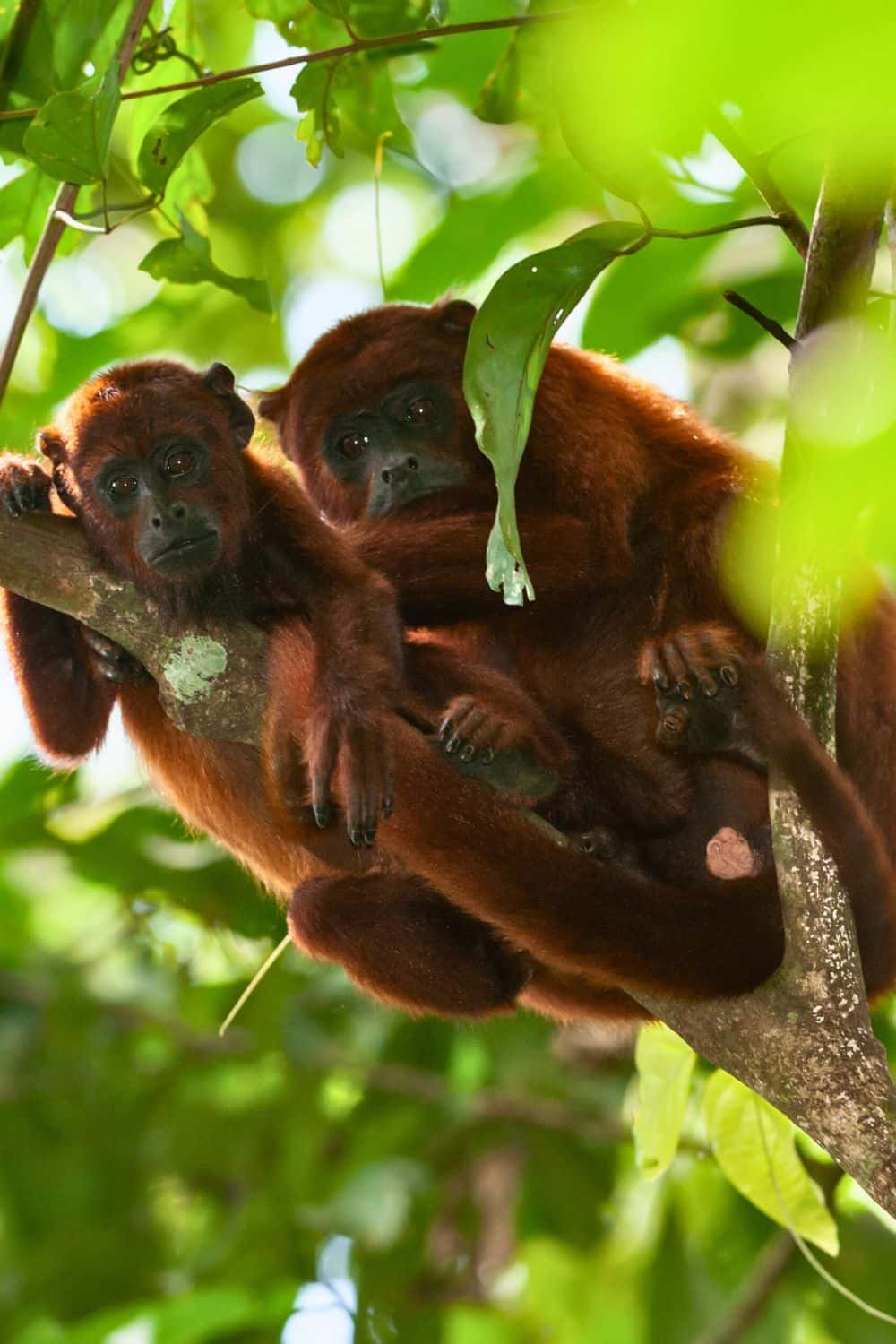
Red Howler Monkey at Tambopata / 3-Day Adventure in the Amazon, Peru
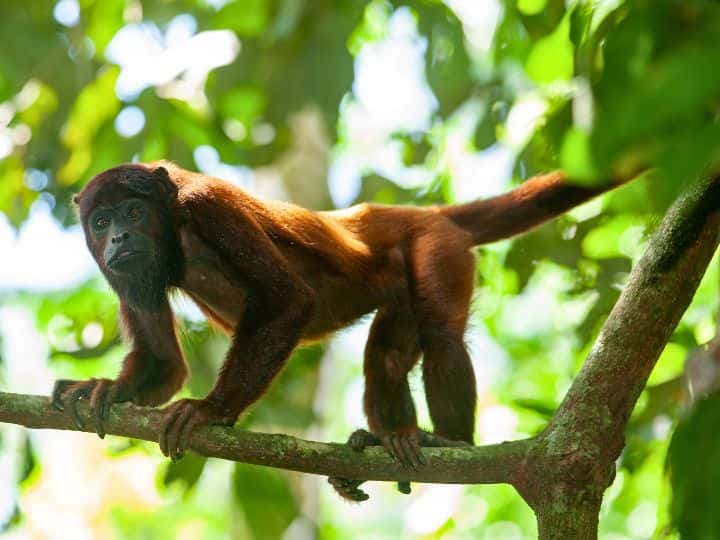
Red Howler Monkey at Tambopata / 3-Day Adventure in the Amazon, Peru
Preparing for Your Amazon Exploration in Peru
Embarking on an adventure in the Tambopata Amazon Jungle requires some preparation to ensure a smooth and enjoyable experience.
Here are some essential steps to help you prepare for your journey:
- Get Required Vaccinations and Medications
Consult with a healthcare professional or travel clinic to determine if any vaccinations or medications are recommended for travel to the Tambopata Amazon Jungle region.
Common recommendations may include vaccinations for yellow fever, typhoid, and hepatitis, as well as antimalarial medications. Start this process well in advance of your trip to allow time for immunizations and medication schedules.
- Stay Physically Active and Fit
Preparing for the physical demands of jungle exploration can enhance your experience. Engage in regular physical activity leading up to your trip to build stamina and endurance. Walking, hiking, and cardio exercises can help prepare your body for the activities and terrain you may encounter in the rainforest.
- Check Travel Documents and Insurance
Ensure that your passport is valid for at least six months beyond your planned departure date. Check visa requirements for Peru and make any necessary arrangements. Additionally, obtain comprehensive travel insurance that covers medical emergencies, trip cancellations, and lost belongings.
Safety Precautions in Amazonian Rainforest, Peru
When exploring the Tambopata Amazon Jungle, it is important to prioritize safety to ensure a secure and enjoyable experience.
Here are some safety precautions to consider:
- Follow the Guidance of Experienced Guides
Listen to and follow the instructions of your experienced local guides. They possess valuable knowledge about the region, wildlife behavior, and potential hazards. Respect their guidance to ensure your safety!
- Wildlife Interaction
Maintain a respectful distance from wildlife and never attempt to touch or feed them. Some animals may appear docile but can be unpredictable and potentially dangerous.
Observe wildlife from a safe distance and use binoculars or a camera with a zoom lens for a closer look.
Avoid approaching or disturbing nesting sites or breeding areas.
- Water Safety
When participating in water-based activities, such as canoeing or swimming, wear a life jacket and follow the safety guidelines provided by your guides.
Be cautious of currents, submerged objects, or potentially harmful aquatic life. Avoid swimming in unknown or unmonitored areas.
- Insect Protection
The Tambopata Amazon Jungle is known for its diverse insect population. Protect yourself from mosquito bites by wearing long-sleeved shirts, and long pants, and applying insect repellent to exposed skin. Use bed nets or ensure your accommodations have proper insect protection in place.
- Sun Protection
The tropical climate of the rainforest means strong sun exposure. Protect yourself by wearing a hat, and sunglasses, and applying sunscreen with a high SPF. Seek shade during the hottest hours of the day and stay hydrated by drinking plenty of water.
- Trail Safety
Stick to designated trails and paths provided by your guides. Venturing off on your own can increase the risk of getting lost or encountering potentially dangerous situations.
Be cautious of uneven terrain, slippery surfaces, and obstacles such as fallen branches or tree roots.
- Respect Local Customs and Wildlife
Respect the customs and traditions of the local indigenous communities. Seek permission before taking photos or engaging in any activities that may disrupt their way of life.
Avoid littering and minimize your impact on the environment. Refrain from collecting or removing any plants, animals, or artifacts from the rainforest.
- Stay Hydrated and Healthy
Drink plenty of water to stay hydrated in the humid rainforest environment. Be cautious of consuming water from unknown sources and opt for bottled or filtered water. Follow good hygiene practices, such as washing hands regularly, to prevent illnesses.
Packing for Your Amazon, Peru Exploration
When packing for your adventure in the Amazon Jungle, it is important to pack wisely and efficiently.
Here is a list of essential items to consider:
Clothing:
- Lightweight, breathable shirts and pants
- Long-sleeved shirts and pants to protect against insects and sun exposure
- Comfortable walking shoes or hiking boots
- Sandals or water shoes for water-based activities
- Socks (consider moisture-wicking or quick-drying materials)
- Hat or cap for sun protection
- Rain jacket or poncho
- Swimsuit (for swimming in rivers or oxbow lakes)
- Sleepwear
- Undergarments
Gear and Accessories:
- Daypack or backpack for carrying essentials during excursions
- Binoculars for wildlife spotting
- Camera or smartphone with waterproof case or bag
- Extra batteries or power banks for electronic devices
- Headlamp or flashlight with extra batteries for evening and night tours
- Insect repellent (containing DEET or other effective ingredients)
- Sunscreen (high SPF, preferably reef-safe)
- Personal toiletries (including biodegradable soap and shampoo)
- Prescription medications and basic first aid kit
- Reusable water bottle
- Ziplock bags or dry bags for waterproof storage
- Travel adapter for charging devices
Miscellaneous:
- Travel documents (passport, visa, identification)
- Cash and/or credit cards
- Guidebooks or field guides for reference
- Spanish phrasebook or language translation app
- Snacks or energy bars
- Travel umbrella (for additional rain protection)
- Travel towel or microfiber towel
- Plastic bags (for separating wet or dirty clothes)
- Travel insurance information and emergency contact numbers
Remember to pack light and prioritize functional, moisture-wicking, and quick-drying clothing. Limit the number of unnecessary items to ensure easy mobility during your jungle explorations. Also, check with your specific tour company or lodge for any additional recommendations or specific gear requirements.
Journey to the Heart of Tambopata Amazon Jungle: Refugio Amazonas Lodge
All in all, after doing all the research, I selected the Tambopata Amazon Region and settled on Refugio Amazonas Lodge. Here is how to get there:
Getting to the Tambopata Amazon Jungle Region and Refugio Amazonas Lodge is an exciting journey that involves a combination of transportation modes and a sense of adventure.
Here is what you should know about how to reach this remarkable destination:
- Lima to Puerto Maldonado:
Most travelers start their journey by flying from Lima, Peru’s capital, to Puerto Maldonado, the gateway city to the Tambopata region. Several airlines offer direct flights, and the flight duration is approximately 1.5 to 2 hours.
- Puerto Maldonado to the Tambopata River Port:
Upon arrival in Puerto Maldonado, you will be greeted by representatives from your chosen tour company or lodge. From there, you will embark on a short transfer by vehicle to the Tambopata River port. This journey takes around 20 to 30 minutes.
- Tambopata River Port to Refugio Amazonas Lodge
At the Tambopata River port, you will board a motorized canoe that will take you on an incredible river journey deep into the Amazon rainforest. The canoe ride from the river port to Refugio Amazonas Lodge typically lasts around 2 to 3 hours, depending on water levels and weather conditions.
During this scenic journey, you will have the opportunity to observe the stunning landscapes, river wildlife, and the transition from inhabited areas to pristine rainforest.
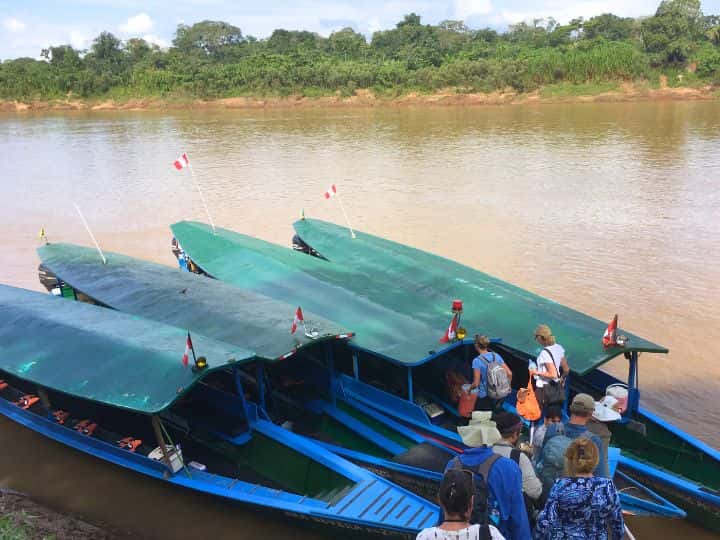
Tambopata River Port to Refugio Amazonas Lodge / 3-Day Adventure in the Amazon, Peru
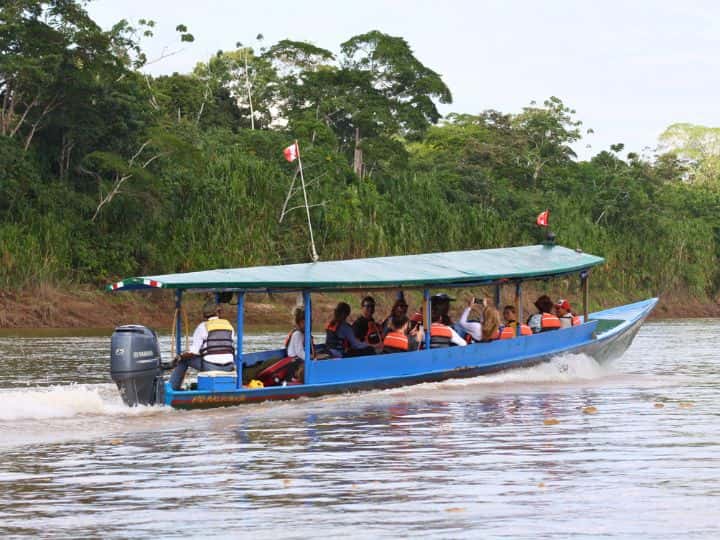
Tambopata River Port to Refugio Amazonas Lodge / 3-Day Adventure in the Amazon, Peru
PRO TIP: During the journey from Tambopata River Port to Refugio Amazonas Lodge be on the lookout for wildlife!
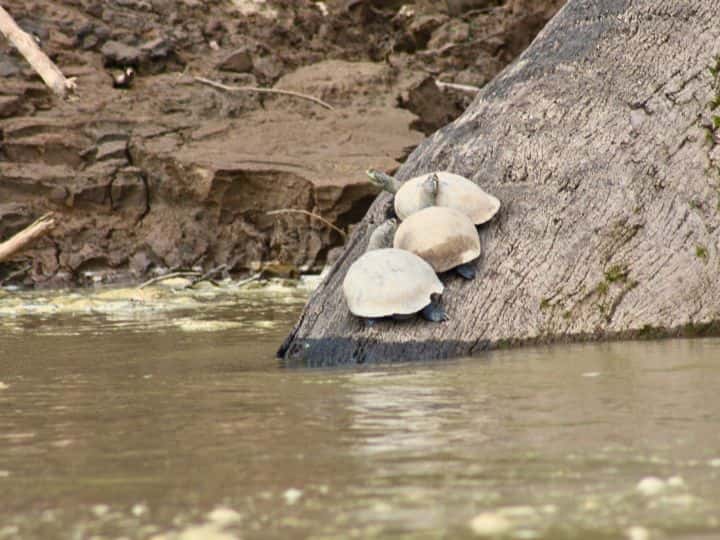
Tambopata River Port to Refugio Amazonas Lodge / 3-Day Adventure in the Amazon, Peru
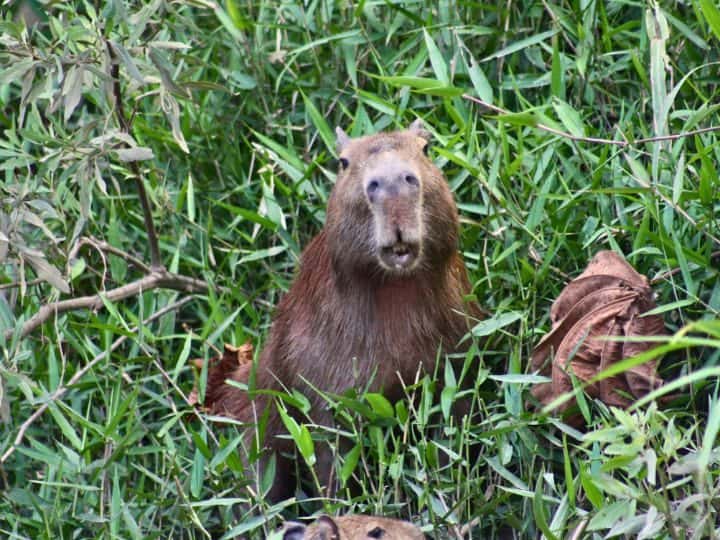
Capybara by the Tambopata River / 3-Day Adventure in the Amazon, Peru
- Arrival at Refugio Amazonas Lodge
Once you arrive at Refugio Amazonas Lodge, you will be warmly welcomed by the lodge staff.
Refugio Amazonas is an eco-lodge that provides comfortable accommodations and immersive rainforest experiences. It offers various activities and excursions, including guided jungle walks, wildlife spotting, and cultural interactions with the local indigenous community.
It’s important to note that transportation logistics may vary depending on the tour company or lodge you choose. They will provide detailed instructions and assist you throughout the journey, ensuring a smooth and enjoyable experience.
3-Day Adventure in the Amazon, Peru
Why You Should Select Refugio Amazonas Lodge for Your Amazon Adventure in Peru
Refugio Amazonas Lodge is a unique eco-lodge located in the Tambopata National Reserve, a pristine rainforest region in the Peruvian Amazon. It offers a remarkable opportunity to immerse yourself in the incredible biodiversity and cultural heritage of the area.
Here is an overview of Refugio Amazonas Lodge:
- Accommodations
Refugio Amazonas Lodge provides comfortable and eco-friendly accommodations that blend harmoniously with the surrounding rainforest. The lodge offers private rooms with en-suite bathrooms, complete with hot water showers and modern amenities. The rooms are designed to provide a comfortable and immersive experience in the heart of the jungle.
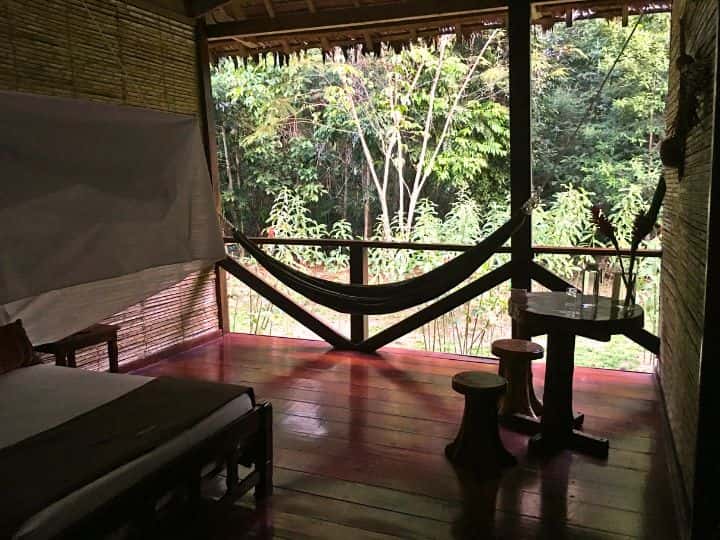
Refugio Amazonas Lodge / 3-Day Adventure in the Amazon, Peru
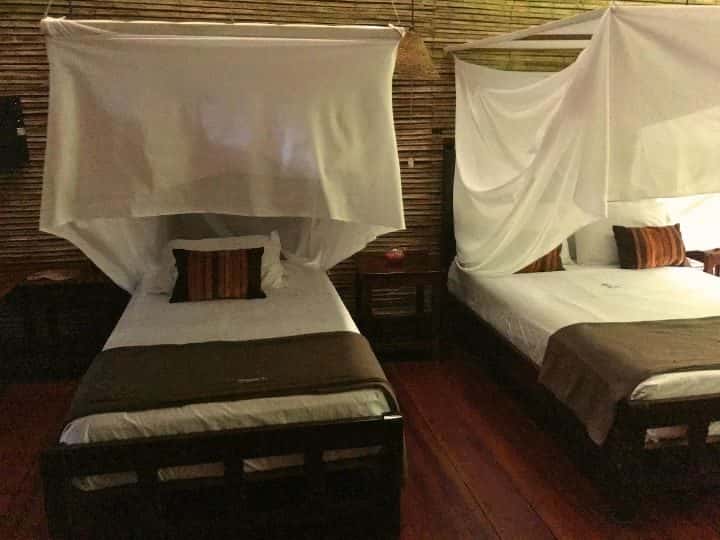
Refugio Amazonas Lodge / 3-Day Adventure in the Amazon, Peru
- Facilities and Amenities
The lodge features a spacious dining area where you can enjoy delicious meals prepared with fresh local ingredients. There is also a lounge area for relaxation and socializing, as well as a gift shop offering locally-made crafts and souvenirs.
Refugio Amazonas Lodge emphasizes sustainable practices, including solar panels for electricity, composting toilets, and responsible waste management.
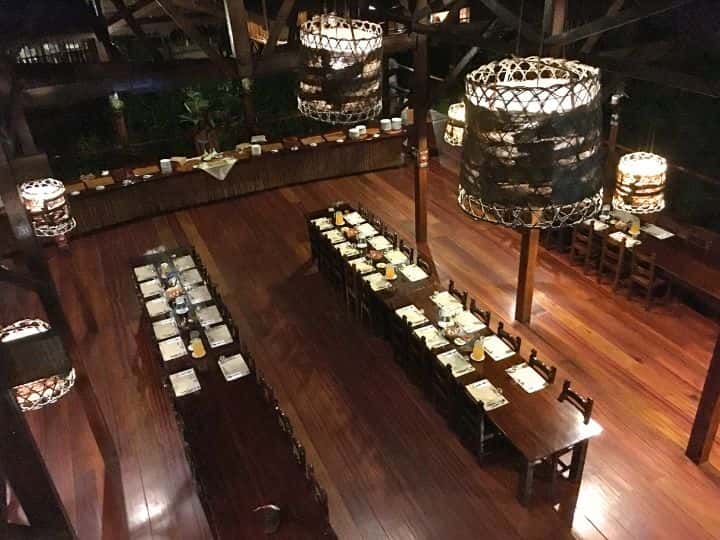
Refugio Amazonas Lodge / 3-Day Adventure in the Amazon, Peru
- Rainforest Activities
The lodge offers a wide range of guided activities and excursions that allow you to explore the Tambopata Amazon Jungle and discover its wonders. These activities include guided jungle walks, birdwatching tours, canoe trips on the Tambopata River and oxbow lakes, cultural interactions with indigenous communities, and visits to observation towers for breathtaking views of the rainforest canopy.
- Wildlife and Nature
The Tambopata region is known for its exceptional biodiversity, with abundant wildlife species, including macaws, monkeys, caimans, and countless bird and insect species. With the guidance of knowledgeable local guides, you’ll have the opportunity to observe and learn about the rainforest’s fascinating flora and fauna, contributing to a deeper understanding of the delicate ecosystem.
- Cultural Experiences
Refugio Amazonas Lodge provides unique opportunities for cultural immersion. You can engage with local indigenous communities and learn about their traditional way of life, customs, and sustainable practices. Participate in activities like handicraft workshops, traditional cooking demonstrations, and storytelling sessions to gain insights into the rich cultural heritage of the region.
- Sustainability and Conservation
The lodge places a strong emphasis on sustainability and conservation. It works closely with local communities, supporting projects that promote sustainable livelihoods and the preservation of the rainforest. By staying at Refugio Amazonas Lodge, you contribute to responsible tourism practices and the protection of this valuable ecosystem.
Best Jungle Excursions and Activities at Refugio Amazonas Lodge
Refugio Amazonas offers a la carte activities which will allow you to create a unique and personal experience.
As soon as you get to the Refugio Amazonas Lodge, your guide will talk to you about all the activities that are available. So, choose the ones that interest you.
Following are some of the activities that I have done at Refugio Amazonas Lodge:
Chunchi Macaw Clay Lick Excursion
One of the fascinating activities offered at Refugio Amazonas Lodge is the Chuncho Macaw Clay Lick Excursion.
The Chuncho Macaw Clay Lick is a natural phenomenon where vibrant macaws and other parrot species gather to feed on mineral-rich clay deposits. This activity provides an incredible opportunity to witness the spectacular display of colorful birds and observe their intriguing behavior.
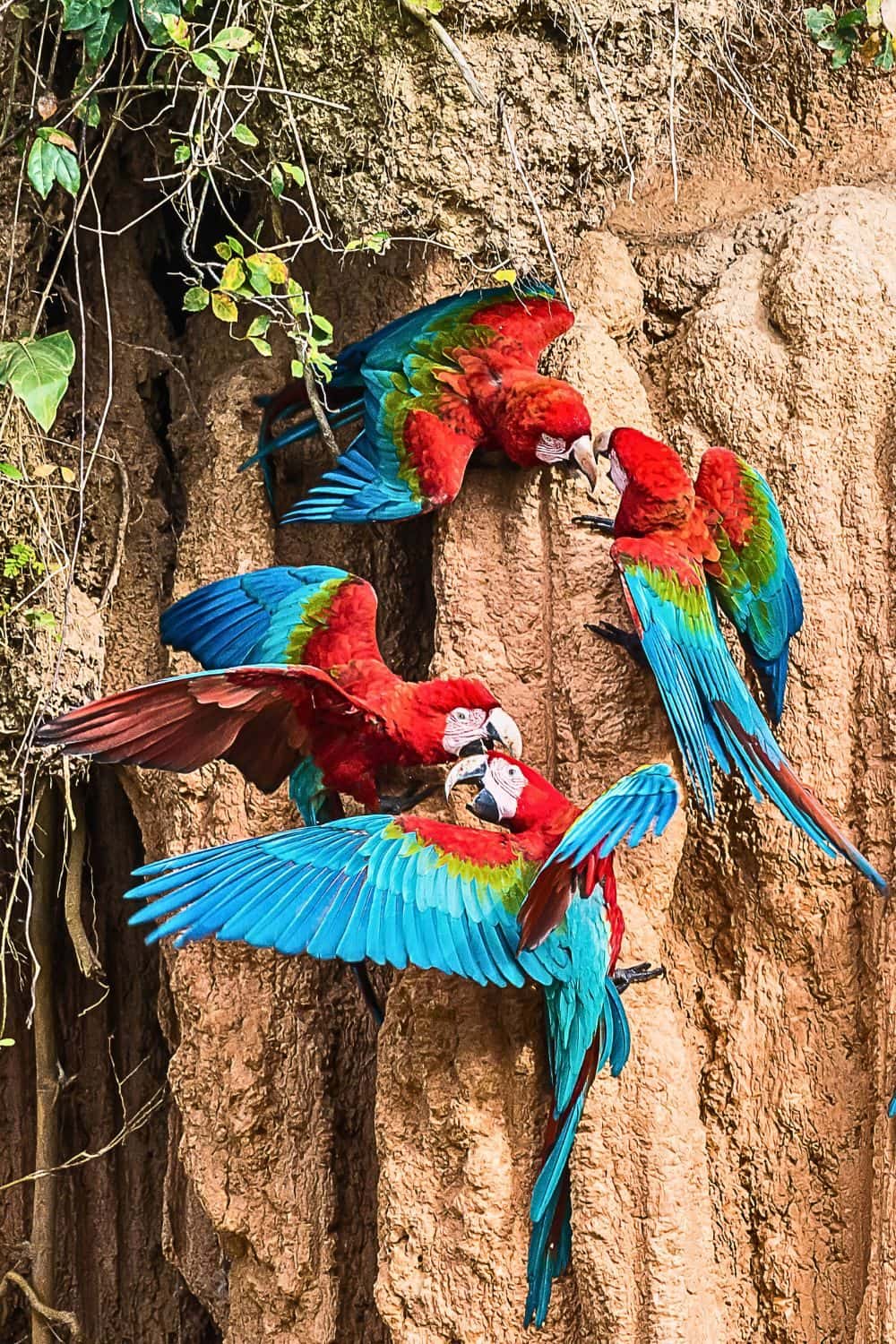
Chunchi Macaw Clay Lick / 3-Day Adventure in the Amazon, Peru
GOOD TO KNOW: Donald Brightsmith, who directs the Tambopata Macaw Project in the lowlands of southeastern Peru, points out that parrots in other regions around the globe consume foods that contain toxins, including those with tannins, and yet it’s only those in the western Amazon basin who visit these clay banks, also called salt licks or clay licks. Brightsmith argues that there’s a connection between this clay-eating and the fact that the western Amazon basin is lacking in salt.
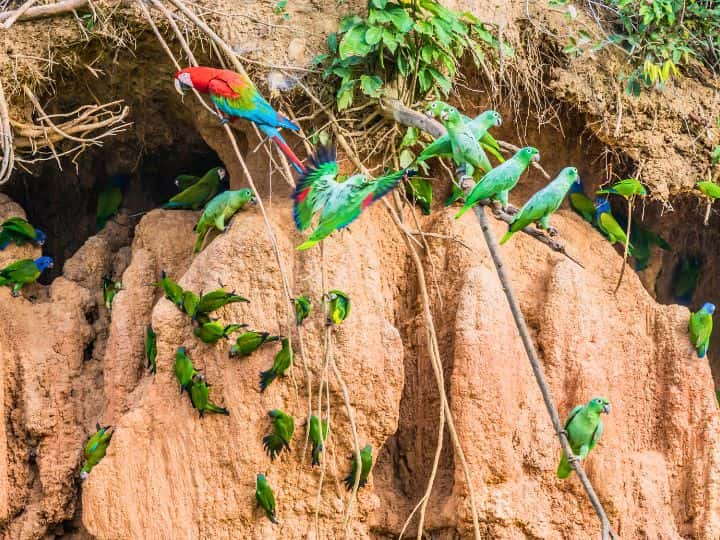
Chunchi Macaw Clay Lick / 3-Day Adventure in the Amazon, Peru
Chuncho Macaw Clay Lick Excursion begins before sunrise since it takes time to reach the lick and early morning is the optimal time to witness the macaws’ activity.
You will embark on a boat journey along the Tambopata River, surrounded by the lush rainforest. The boat ride itself offers chances to spot various wildlife species along the riverbanks.
To be honest, the boat ride with the sun coming up is an awesome experience!
Upon reaching the Chuncho Macaw Clay Lick, your experienced guide will lead you to a strategic observation point. From a safe distance, you can quietly observe and marvel at the remarkable sight of macaws and parrots congregating around the clay lick. The vibrant plumage of the birds, combined with their lively calls and interactions, create a captivating scene.
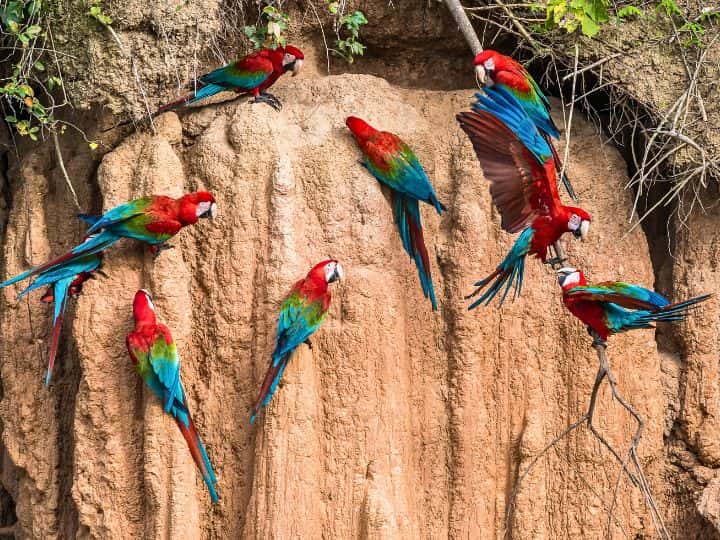
Chunchi Macaw Clay Lick / 3-Day Adventure in the Amazon, Peru
Your guide will provide insights into the macaws’ behavior, feeding patterns, and the importance of clay consumption for their diet. You will gain a deeper understanding of the ecological significance of the clay lick and its role in the macaws’ overall well-being.
You will have the opportunity to capture stunning photographs of the macaws as they perch and take flight. The combination of the colorful birds against the backdrop of the Amazon rainforest creates incredible photo opportunities. Additionally, you can use binoculars or a spotting scope to observe the birds’ behavior and appreciate their unique characteristics up close.
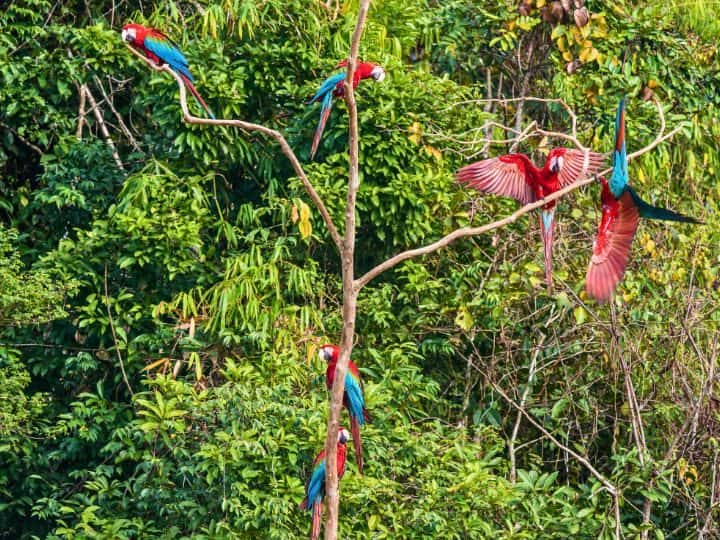
Chunchi Macaw Clay Lick / Amazon, Peru
GOOD TO KNOW: Macaws are facilitating birds. Here are a few things that I found out from my guide:
- Macaws usually mate for life. Once macaws reach breeding age at around 3 to 4 years old, they will pick a partner. Usually, they stay together for life. This is not just for breeding purposes. They genuinely care for each other by sharing food, grooming each other, and together caring for their offspring.
- Macaws are very loud. They will announce their arrival at the clay lick with loud calls and shrieks. It is as if they are claiming their territory. Did you know that macaws give each of their chicks its own “name” and all members will know how to reproduce these individualized calls?
- Macaws have a long life span. Macaws live to be around 60 years in the wild. Macaws’ life span in captivity can extend for up to 80-100 years.
- Did you know that almost all macaw species are either threatened, critically endangered, or extinct?
Sunrise Canopy Observation Tower Excursion
One of the captivating activities offered at Refugio Amazonas Lodge is the Sunrise Canopy Observation Tower Excursion. Here is what you need to know:
The Sunrise Canopy Observation Tower Excursion allows you to witness the awakening of the rainforest from an elevated vantage point. It provides a unique opportunity to observe the jungle come to life as the sun rises, casting its golden rays over the lush canopy.
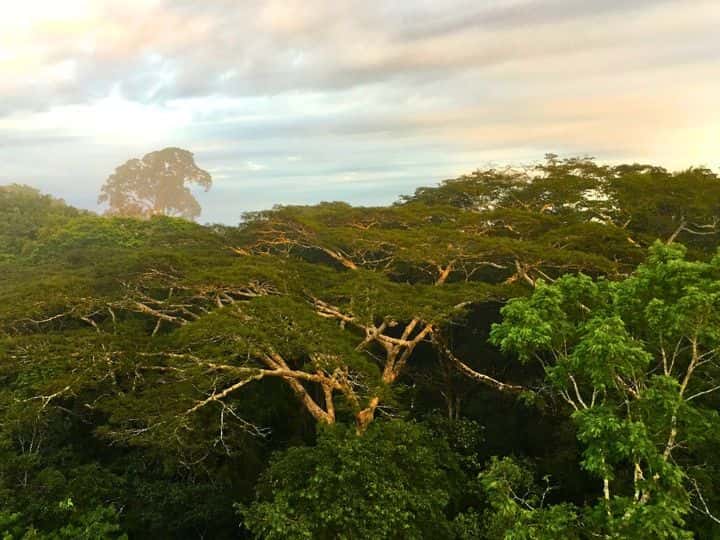
Sunrise Canopy Observation Tower Excursion / Amazon, Peru
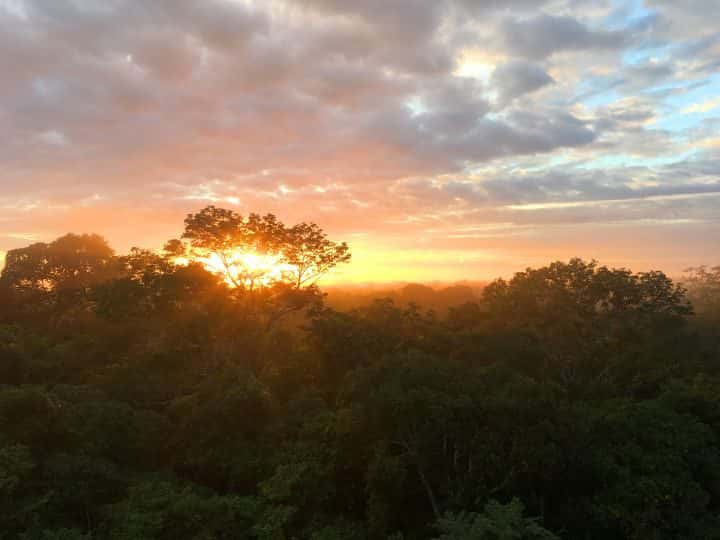
Sunrise Canopy Observation Tower Excursion / 3-Day Adventure in the Amazon, Peru
This excursion begins before dawn to ensure you reach the observation tower in time for sunrise.
As you make your way through the rainforest, you will have the chance to witness the transition from darkness to the soft glow of dawn.
Upon arrival at the canopy observation tower, you will climb to the top, ascending through the layers of the rainforest. The tower provides an elevated platform from which to view the expansive canopy, offering panoramic views of the surrounding jungle.
PRO TIP: Once you step on the platform, you will be able to finally take a good breath of cool fresh air and feel free of the oppressive humidity!
As the sun begins to rise, the jungle awakens with a chorus of sounds and a burst of activity. You will witness the remarkable sight of the sun’s rays filtering through the treetops, illuminating the rainforest in a warm golden light. Birds and other wildlife start their morning routines, creating a lively and captivating scene.
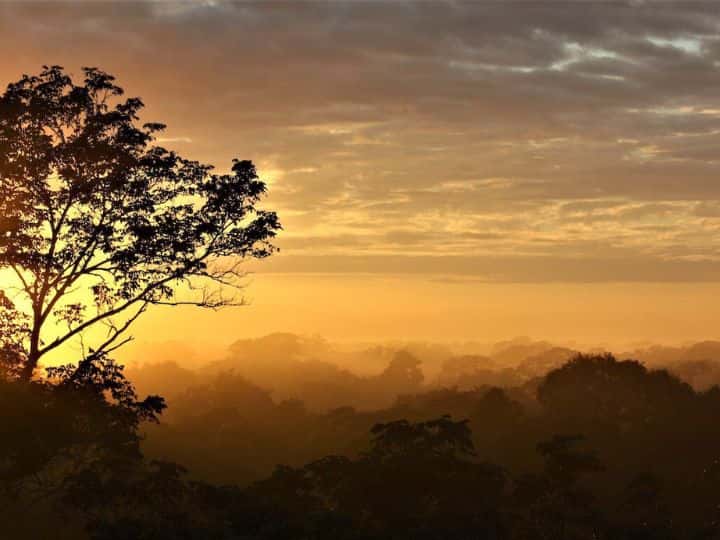
Sunrise Canopy Observation Tower Excursion / 3-Day Adventure in the Amazon, Peru
The observation tower serves as an ideal spot for birdwatching and wildlife spotting. Your guide will help you identify the diverse bird species that soar through the canopy, filling the air with their calls. Keep your eyes open for colorful toucans, macaws, parrots, and other winged inhabitants of the rainforest. You may also have the opportunity to spot monkeys, sloths, and other wildlife moving through the trees.
Throughout the experience, your guide will share insights about the rainforest ecosystem, pointing out unique plant and animal species and explaining their ecological roles. You will gain a deeper understanding of the intricate balance and interdependencies within this remarkable environment.
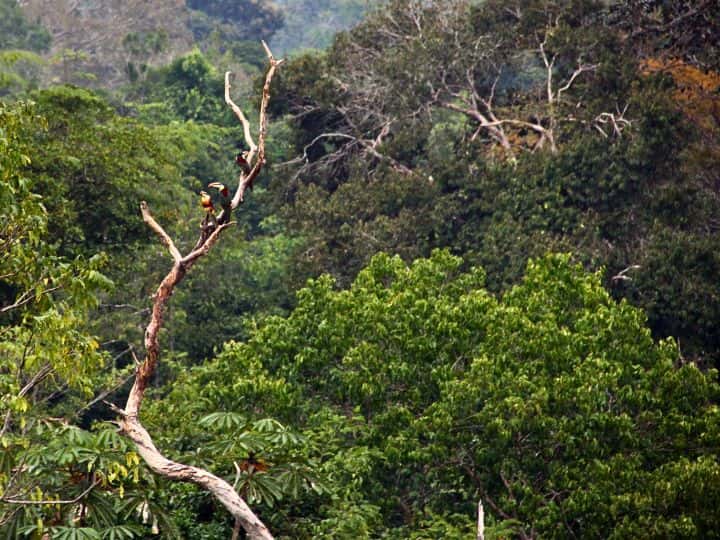
Sunrise Canopy Observation Tower Excursion / 3-Day Adventure in the Amazon, Peru
GOOD TO KNOW: The average size of the tallest trees ranges from 30 to 45 meters (98.4 to 147.6 feet). A few trees grow above these limits, reaching 60 meters (199 feet).
After witnessing the sunrise spectacle and spending time observing the canopy, you will descend from the observation tower and make your way back to Refugio Amazonas Lodge. As you journey through the awakening rainforest, take in the sights and sounds of the morning, cherishing the memories of this extraordinary experience.
Mammal Clay Lick Excursion
One of the fascinating activities offered at Refugio Amazonas Lodge is the Mammal Clay Lick Excursion:
The Mammal Clay Lick excursion provides an extraordinary opportunity to witness the behavior of various mammal species as they visit mineral-rich clay licks. This activity allows you to observe and learn about the habits and interactions of these remarkable creatures.
The excursion typically begins in the early morning or in the afternoon. You will set out with your guide to explore the rainforest and reach the designated mammal clay lick site. The journey itself offers chances to encounter other wildlife and learn about the diverse ecosystem of the Tambopata Amazon Jungle.
Upon arrival at the mammal clay lick, you will find a concealed vantage point where you can quietly observe and wait for the animals to appear. The clay lick is a natural site where various mammal species congregate to ingest the mineral-rich clay, which helps supplement their diets and provides essential nutrients.
You will have the opportunity to spot and observe mammals such as tapirs, peccaries, deer, and possibly even jaguars. Witnessing these fascinating creatures in their natural habitat, exhibiting their unique behaviors and interactions, is an unforgettable experience.
Throughout the excursion, your guide will provide insights into the mammal species found in the Tambopata region, their ecological importance, and the challenges they face for survival. You will learn about their feeding habits, social dynamics, and the role of the clay lick in their lives.
You will have the chance to capture photographs or video footage of the mammals as they approach and interact with the clay lick.
Mammal Clay Lick / 3-Day Adventure in the Amazon, Peru
Night Lectures at Refugio Amazonas Lodge
One of the educational and engaging activities offered at Refugio Amazonas Lodge is the Night Lectures:
The Night Lectures provide an opportunity to expand your knowledge about the Amazon rainforest, its diverse ecosystems, and the ongoing conservation efforts in the region.
These informative presentations are led by knowledgeable guides or guest experts who share their expertise and insights with the lodge guests.
The lectures cover a range of subjects related to the Amazon rainforest, including its biodiversity, unique flora and fauna, indigenous cultures, sustainable practices, ongoing research, and conservation challenges.
Each night’s lecture focuses on a specific topic, offering a deeper understanding of various aspects of the rainforest ecosystem.
The presentations are designed to be engaging and interactive, fostering a learning environment where guests can ask questions and participate in discussions. The guides or guest speakers use visual aids, photographs, and sometimes even audio or video recordings to enhance the learning experience and bring the information to life.
Refugio Amazonas Lodge often invites guest experts or researchers who specialize in different fields related to the Amazon rainforest. These experts share their firsthand experiences, research findings, and valuable insights, providing a unique opportunity to learn from their expertise.
Local guides, with their in-depth knowledge of the rainforest, also contribute to the lectures by sharing their perspectives and personal stories.
The night lectures often emphasize the importance of conservation and sustainable practices in the Amazon rainforest. They highlight the challenges facing the region and discuss the ongoing efforts to protect the unique ecosystems and cultural heritage of the area.
Night Lectures at Refugio Amazonas Lodge / 3-Day Adventure in the Amazon, Peru
In addition to the ecological aspects, the night lectures may touch upon the rich cultural history of the Amazon rainforest and its indigenous communities. This provides guests with a holistic understanding of the region, its cultural significance, and the need for responsible and respectful tourism practices.
GOOD TO KNOW: I listened to an interesting lecture about jaguars and watched the footage from several of the webcams set up throughout the jungle.
The area from Refugio Amazonas to the Tambopata Research Center is divided into two blocks on each side of the river. They form the Big Grid. Take a look at the picture right below:
Each blue dot on the grid represents a camera station. Interestingly, some stations have two cameras so that images of both sides of the animal are taken. It helps to identify the jaguars since each jaguar has a unique pattern of spots.
Every 3 months a field team visits each camera to download the images and replace batteries. Images are collected and uploaded into the AmazonCam Tambopata project on Zooniverse where scientists can identify the different animals.
GOOD TO KNOW: Interesting facts about Jaguars
- A beast of a name: The word “Jaguar” is a modern version of “yaguara”, a term from one of the Brazilian Tupi-Guarani languages that means “beast”.
- One of the “big cats”: The Jaguar belongs to the same genus as the Tiger, Lion, Leopard, Snow Leopard, and Clouded Leopard. These species are the “big cats” and share a common ancestor.
- Water-loving: Jaguars have no qualms about taking to the water in pursuit of prey or when crossing a river. They will rush into wetlands to pursue capybaras or small caimans. You can even see them swimming across the Tambopata.
- Rosettes, not spots: One of the ways to tell a Jaguar from the similar looking Leopard is by the pattern on its coat. Jaguars have rosettes or distinct groupings of three or four dark markings that surround a smaller spot. Leopards, on the other hand, have spots.
- Widespread but rare: Historically, jaguars ranged from the southeastern United States south throughout the neotropics to eastern Argentina. They quickly disappear from areas impacted by people. Furthermore, they are listed as Near Threatened by conservation authorities.
Source: Rainforest Expeditions
Jungle Night Walk Excursion
One of the thrilling activities offered at Refugio Amazonas Lodge is the Jungle Night Walk.
The Jungle Night Walk allows you to explore the Tambopata Amazon Jungle in a whole new light, quite literally. Led by experienced guides, this activity takes place after sunset, offering a unique opportunity to discover the nocturnal wonders of the rainforest.
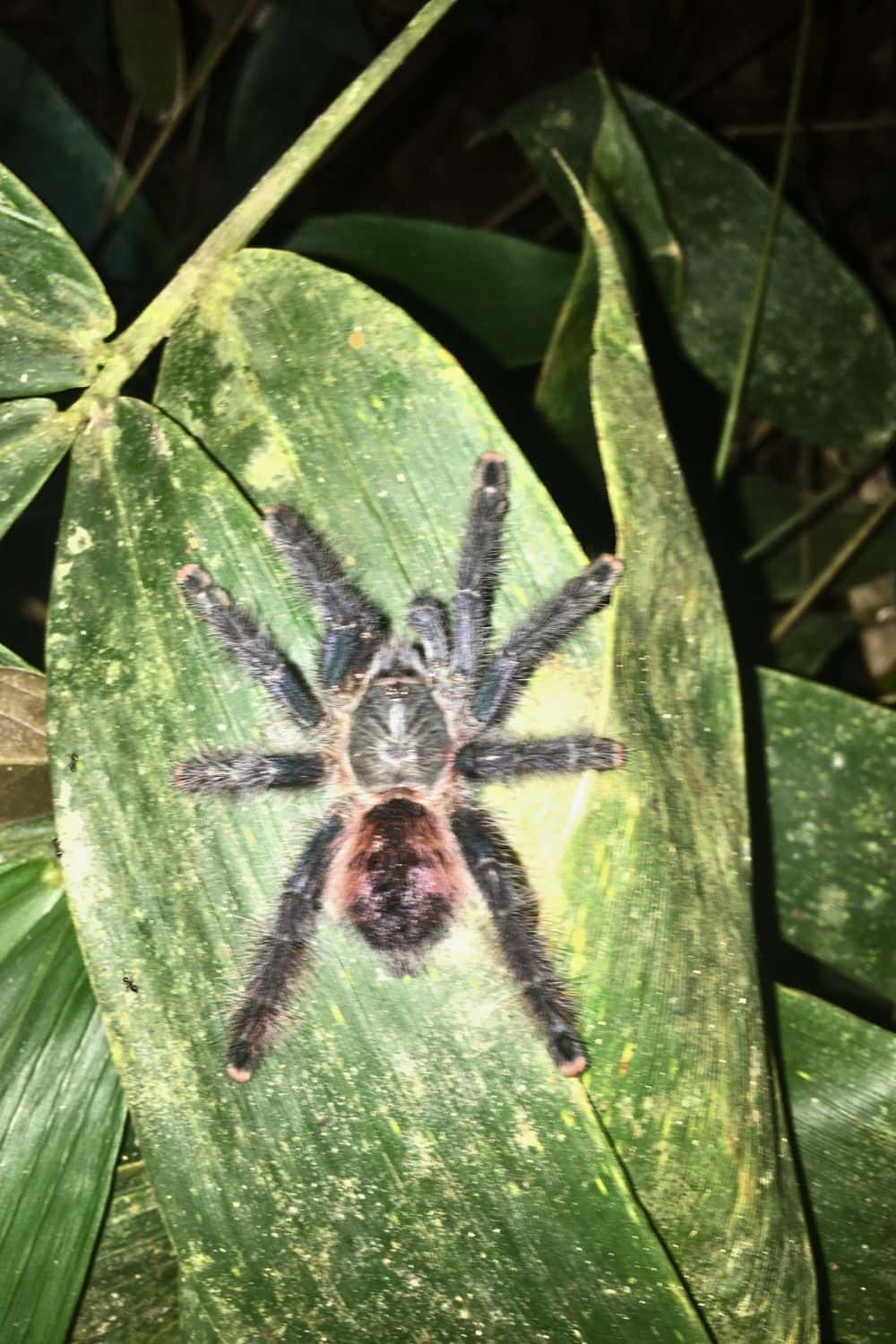
Jungle Night Walk Excursion / 3-Day Adventure in the Amazon, Peru
After dinner at the lodge, you will venture into the darkness of the jungle. Equipped with flashlights or headlamps, you will set out on a guided walk along forest trails that come alive with new sounds and mysterious creatures as night falls.
As you walk through the jungle, your guide will help you spot a variety of nocturnal wildlife species that are active during the nighttime. Look out for fascinating creatures such as night monkeys, tree frogs, tarantulas, insects, and other secretive nocturnal inhabitants of the rainforest.
The Jungle Night Walk is a unique opportunity to engage your senses in a different way. Without the distractions of daylight, you will rely on your hearing, sense of touch, and heightened awareness to explore the rainforest. Listen to the sounds of insects, frogs, and night birds, and feel the different textures of the forest under your fingertips.
Throughout the excursion, your guide will share insights into the remarkable adaptations of the creatures that thrive in the darkness. Learn about their specialized features, hunting techniques, and survival strategies that enable them to navigate the night.
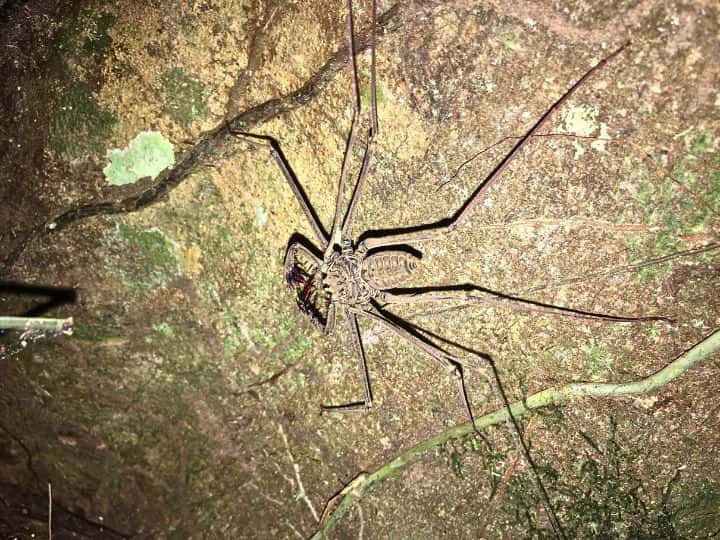
Jungle Night Walk Excursion / 3-Day Adventure in the Amazon, Peru
PRO TIP: Do not miss the Jungle Night Walk Activity. It is the best! It is your chance to see the nocturnal species of the Amazon Rainforest.
While many animals go to sleep at night, many more emerge as soon as it gets dark. I found the jungle to be so much more alive at night compared to the daytime.
If you decide to participate in the Jungle Night Walk Activity, then be prepared that you will be walking in deep darkness surrounded by all the jungle sounds.
My recommendation is to wear long sleeve shirt and pants (not shorts) to protect yourself from the insects. Above all, make sure you have your flashlight or your headlamp.
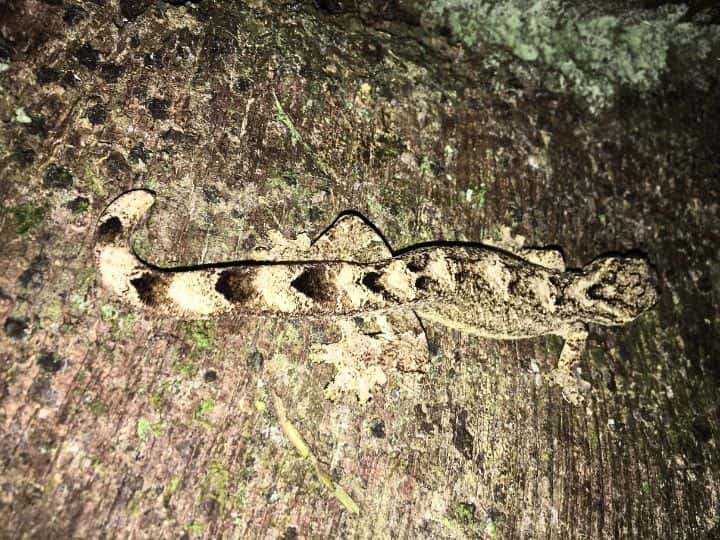
Jungle Night Walk Excursion / 3-Day Adventure in the Amazon, Peru
GOOD TO KNOW: You are going to see a lot of insects. Especially, ants. Did you know that the Amazon region contains more than 1,000 species of ants?
I saw leaf-cutter ants. It was quite a sight to watch them march, with each ant carrying a section of a leaf much greater than its own body.
Jungle Night Walk Excursion / 3-Day Adventure in the Amazon, Peru
Leaf-cutter ants are amazing! They cultivate fungus gardens, which they nourish with the leaves. The fungus is used to feed the ant larvae. What is very interesting is the fact that the bacteria that grow on their bodies enable them to secrete chemicals that maintain the health of their fungus garden.
Leaf-cutter ants form vast colonies with a complex society where different ants perform a range of duties. For example, the smallest minim ants tend the fungus garden, the patrolling minors act to defend forage lines, the mediae ants are responsible for cutting leaves and carrying them back to the nest, and the majors, the largest of the worker ants, combine with military discipline to defend the colony against intruders.
Brazil Nut Trail and Camp Activity
One of the exciting activities offered at Refugio Amazonas Lodge is the Brazil Nut Trail and Camp Excursion.
The Brazil Nut Trail and Camp Activity take you on a journey through the rainforest, following the footsteps of local Brazil nut gatherers. This unique excursion provides insight into the traditional practices and sustainable harvesting of Brazil nuts, a valuable natural resource in the Amazon rainforest.
After breakfast at the lodge, you will embark on a guided hike along the Brazil Nut Trail. Your guide will lead the way, sharing knowledge about the surrounding flora, fauna, and the Brazil nut trees that dot the forest.
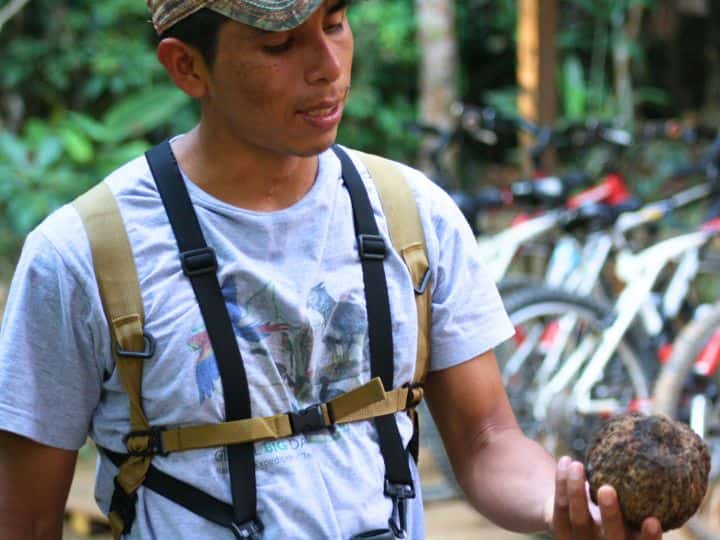
Brazil Nut Trail and Camp Activity / 3-Day Adventure in the Amazon, Peru
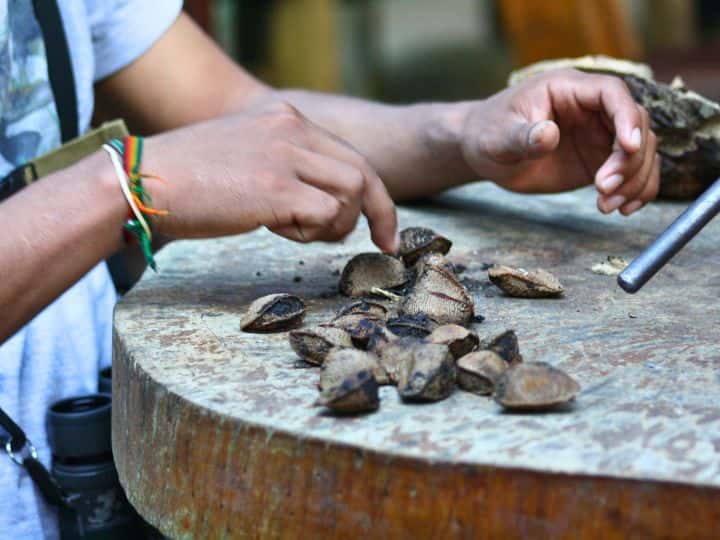
Brazil Nut Trail and Camp Activity / 3-Day Adventure in the Amazon, Peru
As you trek through the rainforest, your guide will provide fascinating information about the process of Brazil nut harvesting. You will learn about the sustainable practices employed by local communities to ensure the long-term viability of this valuable resource.
GOOD TO KNOW: Brazil nut trees are one of the largest and longest-lived trees in the Amazon rainforest. They can reach 50 m (160 ft) in height with a trunk 1 to 2 m (3 ft 3 inches to 6 ft 7 in) in diameter. They may live for 500 years or more.
GOOD TO KNOW: Brazil nut trees produce fruit that looks like a large capsule weighing as much as 2 kg (4 lb 7 oz). The capsules are so hard that we can only open them with several machete swings! Inside the capsule are wedge-shaped seeds. The seeds are packed with healthy fats, selenium, magnesium, copper, phosphorus, manganese, thiamine, and vitamin E.
After a scenic hike, you will arrive at a Brazil nut camp, where you will have the opportunity to see firsthand how the nuts are collected, processed, and prepared for market. The camp provides insight into the traditional methods used by the gatherers, showcasing their knowledge and skills.
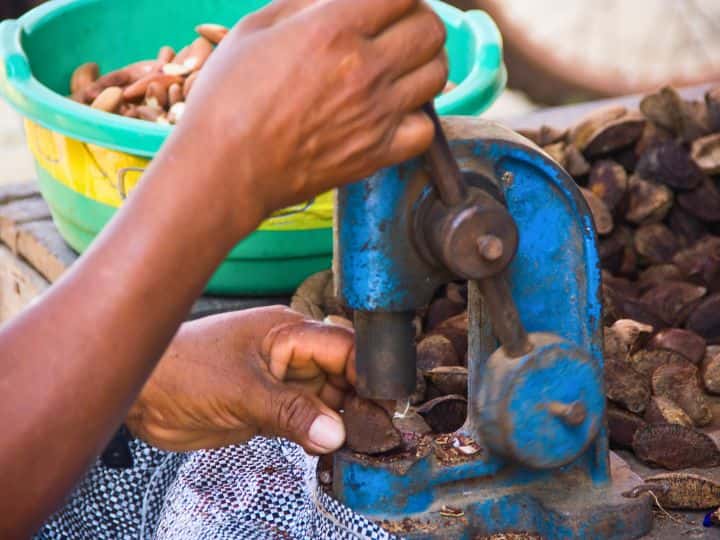
Brazil Nut Trail and Camp Activity / 3-Day Adventure in the Amazon, Peru
During the Brazil Nut Trail and Camp excursion, you may have the chance to participate in some of the activities, such as cracking open the Brazil nut pods, extracting the nuts, and assisting in the preparation of the nuts for consumption or sale. This hands-on experience offers a deeper connection to the local culture and traditions.
At the camp, you will have the opportunity to taste fresh Brazil nuts and sample delicious nut-based snacks or treats. This culinary experience allows you to savor the rich flavors and nutritional benefits of the nuts while supporting the local economy.
Intrepid Scout's Tips for 3-Day Adventure in Amazon, Peru
- Embarking on a 3-day adventure in the Peruvian Amazon is a once-in-a-lifetime experience that will leave you with awesome memories. Prepare yourself for a journey into one of the world’s most remarkable natural wonders.
- The region boasts incredible biodiversity, with countless species of plants, animals, and insects. From towering trees to winding rivers, the landscapes of the Peruvian Amazon will take your breath away.
- Prepare to encounter remarkable wildlife during your Amazon adventure. From colorful macaws and playful monkeys to elusive jaguars and curious river dolphins, the rainforest is teeming with life. Keep your eyes and ears open for sightings.
- Immerse yourself in the vibrant cultures of indigenous communities that call the Amazon their home. Learn about their traditional ways of life, and gain an appreciation for their connection to the land and its resources.
- When planning your trip, consider the best time to visit. The dry season (May to October) offers pleasant weather and better wildlife viewing opportunities, while the rainy season (November to April) brings lush foliage and the chance to witness the rainforest in its full splendor.
- Select a reputable tour company that specializes in Amazon adventures. Look for experienced guides, sustainable practices, and positive customer reviews to ensure a well-organized and enjoyable experience.
- Make necessary preparations for your trip, including obtaining any required visas or permits, arranging transportation, and familiarizing yourself with safety guidelines. Pack lightweight, breathable clothing, insect repellent, a hat, sunscreen, and comfortable shoes to ensure your comfort during the adventure.
- Prioritize sustainability and support local conservation efforts. Respect the fragile ecosystem of the Amazon by following Leave No Trace principles, minimizing your impact, and supporting local initiatives that contribute to the preservation of the rainforest.
You Might Also Like:
BEST TIME to VISIT MACHU PICCHU (Top #1 Month for Ultimate Adventure)
Best SELF-GUIDED MACHU PICCHU TOUR (Explore 11 Marvels of Inca Citadel)
How to See the Mesmerizing SUNRISE at MACHU PICCHU (9 Steps to Witness the Magic)
9 Best PHOTOGRAPHY LOCATIONS at MACHU PICCHU (+Useful Photo Tips)
9 Top THINGS to DO at MACHU PICCHU (Unveiling the Enchanted City of the Incas)
How to Reach Machu Picchu Without Hiking (2 Easy Steps!)
Hiking to MACHU PICCHU from AGUAS CALIENTES in 4 Easy Steps
7 Fun and Cool THINGS to DO in AGUAS CALIENTES (Besides Machu Picchu)
Cusco to Maras Salt Mines: 6 Things to Discover in Sacred Valley’s Natural Wonder
Did You Find This Useful?
Why Not Save 3-Day Adventure in the Amazon, Peru to Your Pinterest Board!
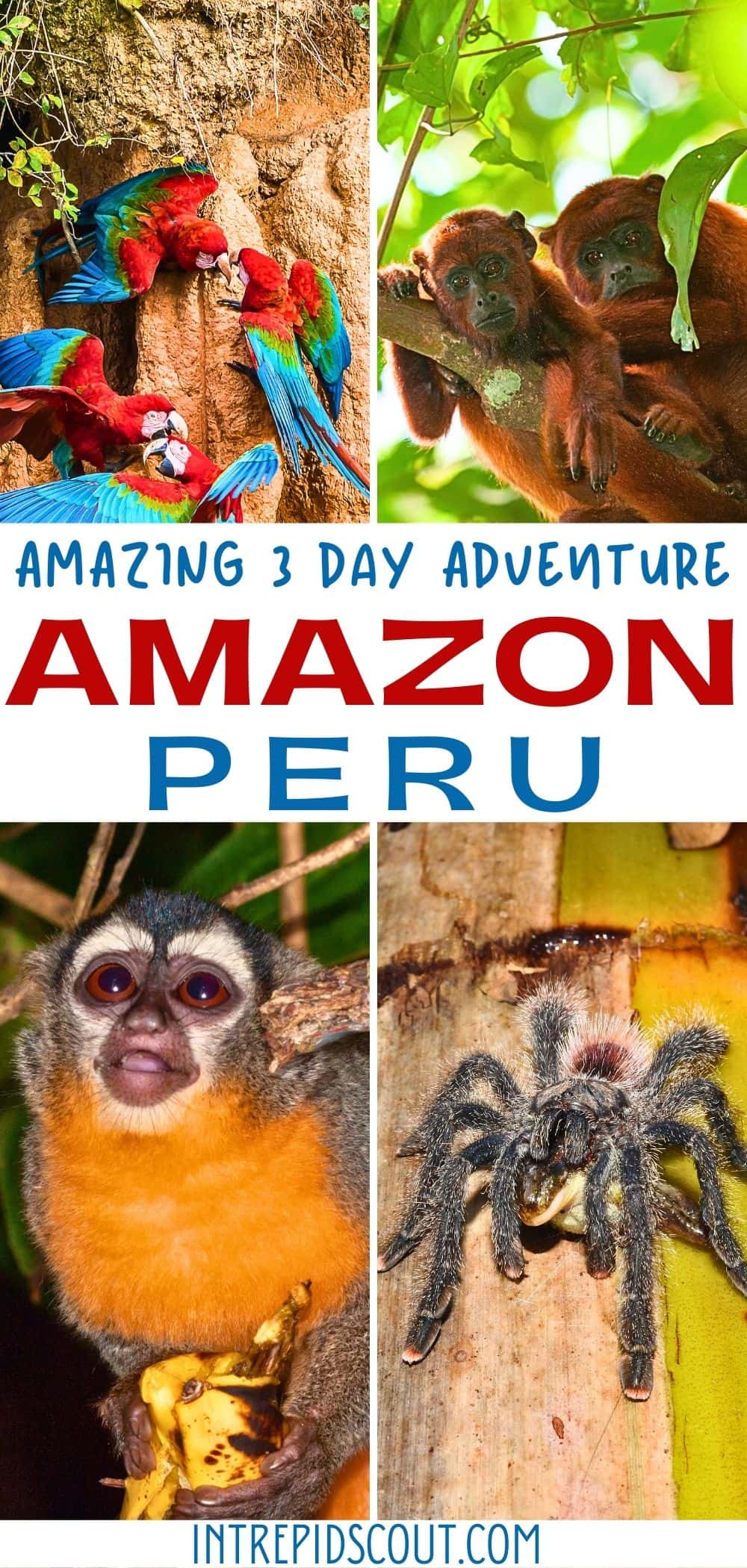
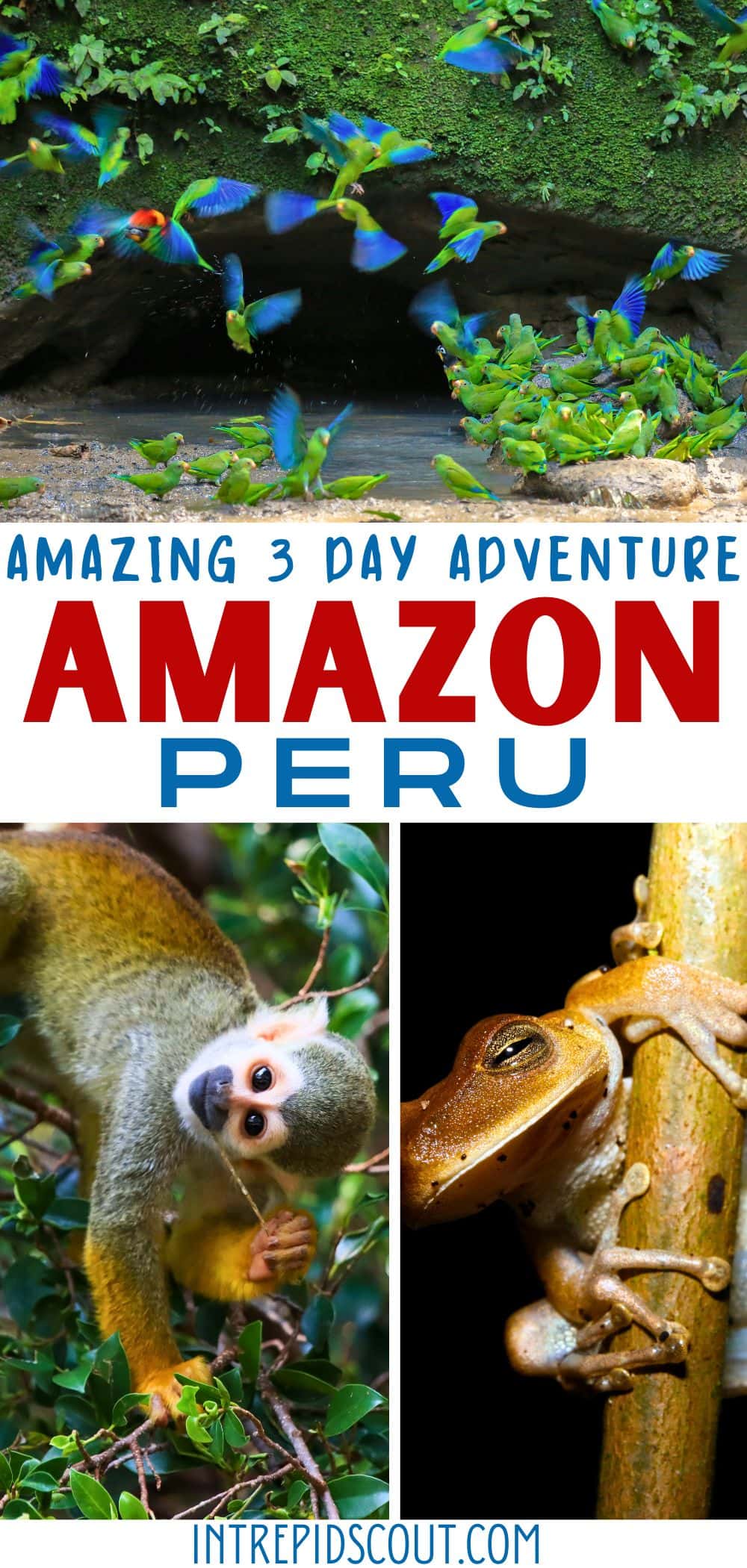
Now, It Is Your Turn, I Would Like to Hear Back from You!
Are you planning a trip to Amazon, Peru?
Please let me know! Drop me a quick comment right below!
Click on any of the images below to get inspired and to help you with the planning process for your trip to Amazon, Peru!
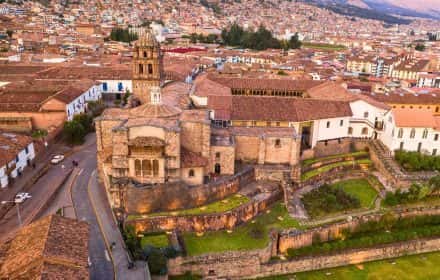
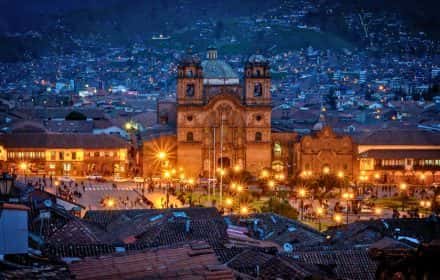
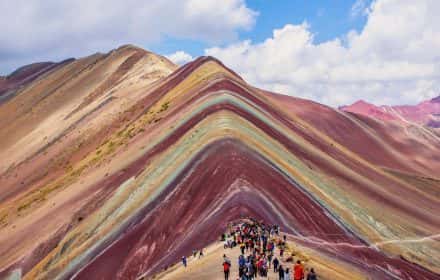
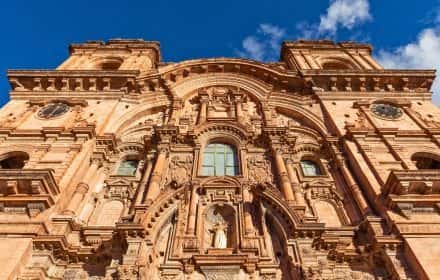
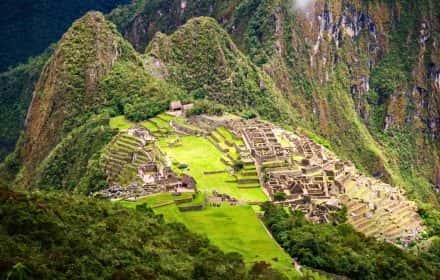
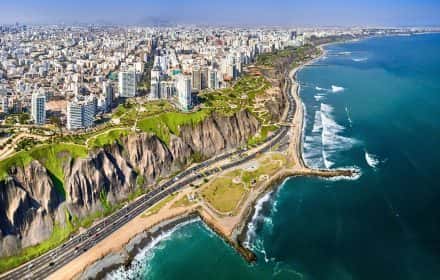
Comments:
4 thoughts on “3-Day Adventure in the Amazon, Peru: Discover the Untamed Rainforest”
Hi, really glad i came across this post as it pushed me towards visiting the Amazon. We ( my husband and 2 kids 11 and 13)are booked to visit Peru this July for 2 weeks. We fly into Lima and plan to finish at machu picchu . We would need to fly back to Lima but thinking now a detour to the Amazon might just work. What is the best way to travel around? I read a bit on the Peru hop, i like this idea as meeting others. I enjoyed travelling SE Asia meeting others.
Hi Jill,
It sounds like you have planned an awesome trip.
The most efficient way to travel in Peru is to fly.
Good luck with everything!
I would like to visit from Cusco for 3 days and explore Amazonian Rainforest – do you have recommendations with whom to book (I am looking for Sept 1 to Sept 5)?
Much appriciated,
Zlat
Hi Zlat,
In my post I mentioned 3 companies worth checking out. Ultimately, I went with Rainforest Expeditions. However, as I mentioned in my post, I am not promoting any of them and you should weigh all the pros and cons: price, activities they offer, accommodations, etc. Let me know if you have any other questions.